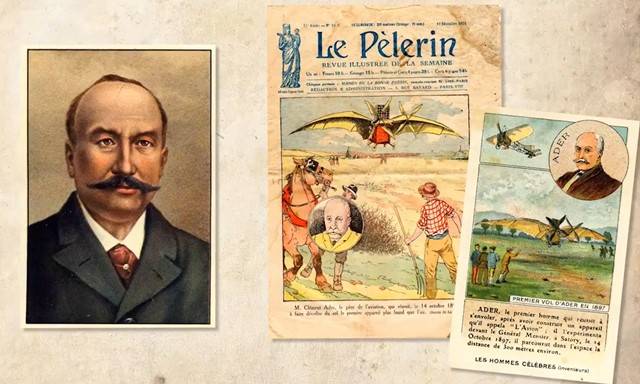He managed to fly a heavier-than-air object for the first time: Who is Clement Ader?
His first attempt at flight with his aircraft, the "Eole", was deemed unsuccessful by many, but is today considered the first flight in a heavier-than-air vehicle.

(1841-1926) French inventor. He was born on February 4, 1841, in Muret. Interested in aviation at an early age, he first made a kite capable of lifting people, and a balloon during his years at the Bridge and Roads Administration. But his main goal was to be able to fly a heavier-than-air machine. When he realized that he could not realize this plan with his limited income, he quit his job in 1876 and went to Paris. After a while, he was able to provide the money he needed for his various inventions related to electrical communication tools such as the microphone. After long studies, his first flight attempt with his plane named "Eole" on October 9, 1890, was considered unsuccessful by many, but today it is considered the first flight in a heavier-than-air vehicle. In 1891, his trial with Avion III did not attract as much attention as the first. A third flight, which he planned to make in 1897, was not possible due to weather conditions. In addition to all these, Ader, who could not get the attention and help he expected from the state, gave up on this plan, never to deal with it again. He died on March 5, 1926, in Toulouse.
Before Ader, methods of flying a heavier-than-air object had been investigated. In the 1870s, Penaud's model bird, which could fly a few meters, was useful in understanding the effect of air on an inclined surface moving at a certain speed. The lack of discovery of a light engine strong enough to reach sufficient speed in the air made it impossible for many years to achieve success in this regard. In 1884, the French Goupil devised the use of the steam engine in aircraft. Based on the same idea, Ader powered his airplane, which he named "Eole", inspired by the wind god Aeolus, with steam power. With this vehicle, whose wing structure resembles that of a bat, it took off and landed after 50 m. Some observers have long downplayed Ader's success, arguing that the attempt was more of a lift-off than a flight. Indeed, the biggest factor in this flight's failure to go beyond a stray and uncontrolled take-off was the inadequacy of the steam engine. In this sense, the first real flight was the experiment of Wilbur and Orville Wright in 1903, after the development of the gasoline engine. Ader's experiment, on the other hand, took its place as an important stage in the history of aviation in terms of proving that a heavier-than-air machine could also take off.
